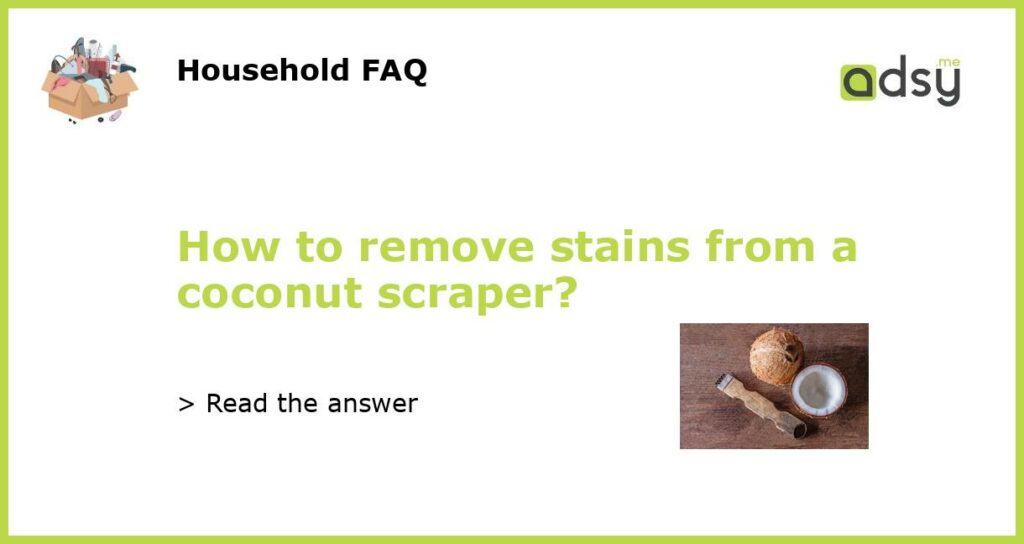Understand the types of stains on a coconut scraper
Before you start removing the stains, it is essential to understand the type of stains that are present on your coconut scraper. There can be oil stains, rust stains, or even water stains. Each type of stain requires a different approach to eliminate, so it is essential to identify the stain first.
Use salt and lemon to remove water stains
Water stains are the most common type of stains on coconut scrapers. To remove them, mix a tablespoon of salt with half a lemon and rub it on the scraper using a rough side of a dish scrubber. Rinse it with water, and the water stains will be gone.
Use vinegar and baking soda to remove rust stains
Rust stains appear on coconut scrapers when they are left in contact with water for too long. To eliminate rust stains, mix a tablespoon of baking soda with a few drops of vinegar to create a paste. Apply the paste to the rust-stained area and let it sit for a few hours. Scrub the area with a rough side of a dish scrubber, and rinse it with water.
Use dish soap to remove oil stains
Coconut scrapers often collect oil stains due to the residue left by coconuts. To remove oil stains, apply dish soap to the stained area and let it sit for a few minutes. Then, scrub the area with a soft brush and rinse it with water. Repeat the process if necessary.
Prevent stains from forming in the first place
The best way to remove stains from the coconut scraper is to prevent them from forming in the first place. After each use, clean the scraper with warm water and dish soap. Dry it with a towel and store it in a dry place. Also, avoid leaving the scraper in contact with water or other liquids for an extended period of time.






